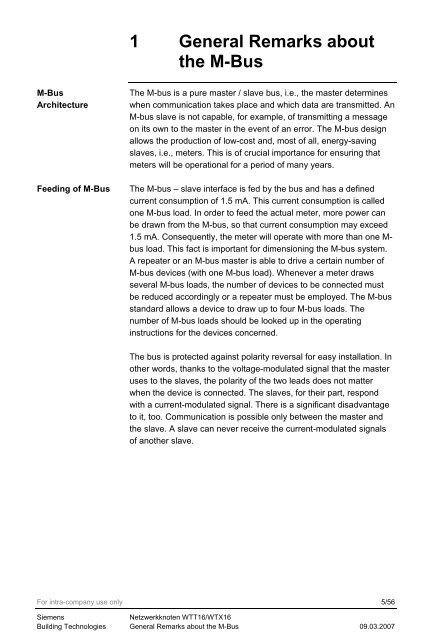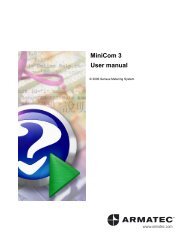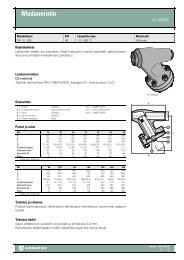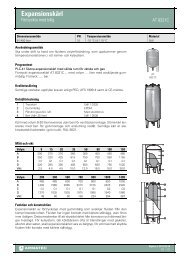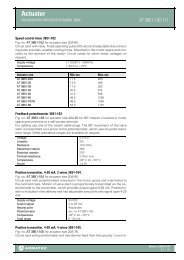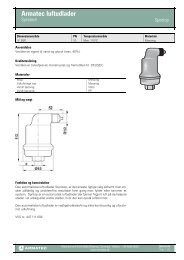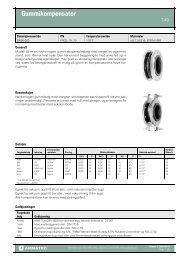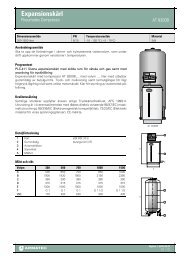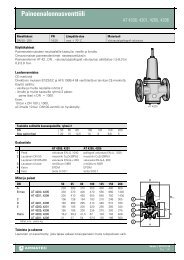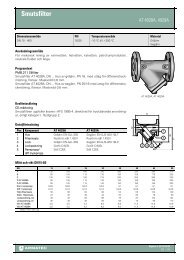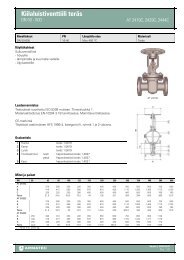Siemeca AMR ⢠Network Node WTT16/WTX16 M-Bus ... - Armatec AB
Siemeca AMR ⢠Network Node WTT16/WTX16 M-Bus ... - Armatec AB
Siemeca AMR ⢠Network Node WTT16/WTX16 M-Bus ... - Armatec AB
Create successful ePaper yourself
Turn your PDF publications into a flip-book with our unique Google optimized e-Paper software.
1 General Remarks about<br />
the M-<strong>Bus</strong><br />
M-<strong>Bus</strong><br />
Architecture<br />
Feeding of M-<strong>Bus</strong><br />
The M-bus is a pure master / slave bus, i.e., the master determines<br />
when communication takes place and which data are transmitted. An<br />
M-bus slave is not capable, for example, of transmitting a message<br />
on its own to the master in the event of an error. The M-bus design<br />
allows the production of low-cost and, most of all, energy-saving<br />
slaves, i.e., meters. This is of crucial importance for ensuring that<br />
meters will be operational for a period of many years.<br />
The M-bus – slave interface is fed by the bus and has a defined<br />
current consumption of 1.5 mA. This current consumption is called<br />
one M-bus load. In order to feed the actual meter, more power can<br />
be drawn from the M-bus, so that current consumption may exceed<br />
1.5 mA. Consequently, the meter will operate with more than one M-<br />
bus load. This fact is important for dimensioning the M-bus system.<br />
A repeater or an M-bus master is able to drive a certain number of<br />
M-bus devices (with one M-bus load). Whenever a meter draws<br />
several M-bus loads, the number of devices to be connected must<br />
be reduced accordingly or a repeater must be employed. The M-bus<br />
standard allows a device to draw up to four M-bus loads. The<br />
number of M-bus loads should be looked up in the operating<br />
instructions for the devices concerned.<br />
The bus is protected against polarity reversal for easy installation. In<br />
other words, thanks to the voltage-modulated signal that the master<br />
uses to the slaves, the polarity of the two leads does not matter<br />
when the device is connected. The slaves, for their part, respond<br />
with a current-modulated signal. There is a significant disadvantage<br />
to it, too. Communication is possible only between the master and<br />
the slave. A slave can never receive the current-modulated signals<br />
of another slave.<br />
For intra-company use only 5/56<br />
Siemens<br />
Netzwerkknoten <strong>WTT16</strong>/<strong>WTX16</strong><br />
Building Technologies General Remarks about the M-<strong>Bus</strong> 09.03.2007


